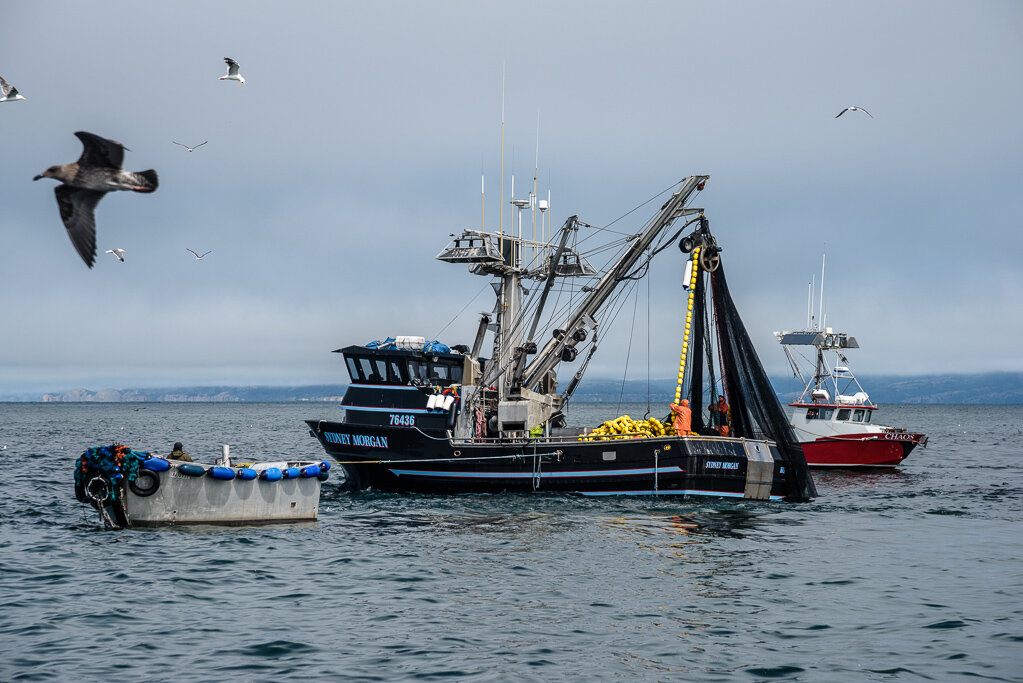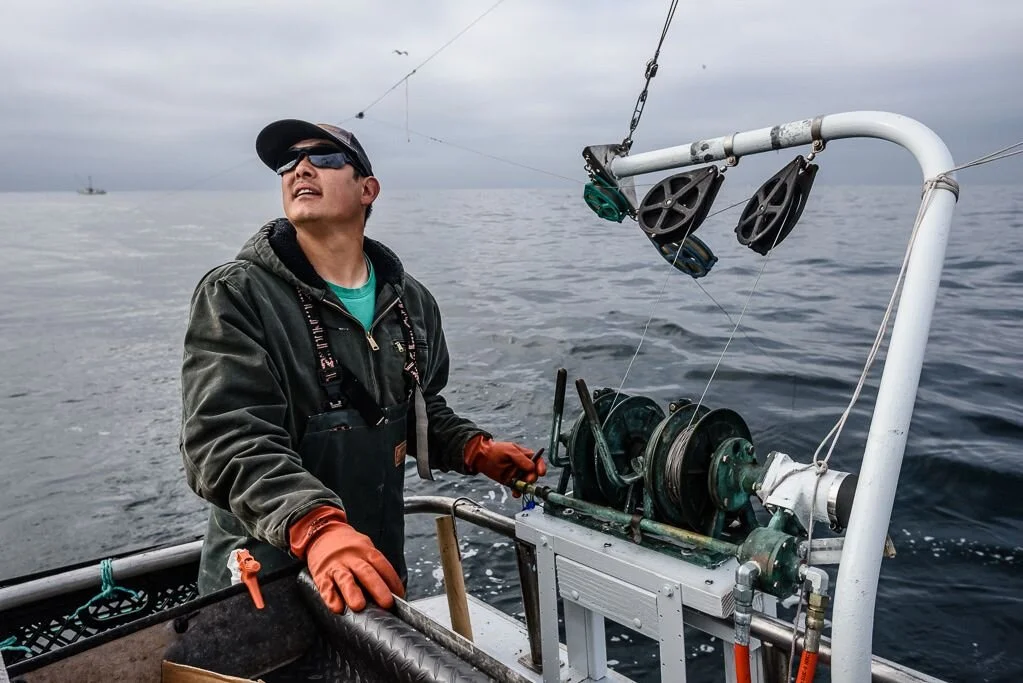Fishing Methods
There are many ways to catch a fish: seine nets, trawl nets, a single line with one hook, a single line with multiple hooks, and traps, among others. Here in the Monterey Bay, fishermen use a variety of gear types to harvest local species sustainably. The gear used is specialized to account for a fish, crab or cephalopod’s habitat, movement, and social behavior while minimizing bycatch and adverse effects on the environment.
Gear types in Monterey Bay fisheries:
A trawl is a method of net fishing where a funnel-shaped net (much like a windsock) is towed behind the boat to capture fish. There are bottom trawls, which primarily target groundfish that live on or near the seafloor, and mid-water trawls (also known as pelagic trawls) that target fish in the mid-and surface water column like Pacific Whiting.
Longlines in the Monterey Bay are used to catch fish that live near the ocean floor with hundreds of baited hooks set and left to soak from just a few hours to a whole day. Species harvested with this method include sablefish, rockfish, lingcod, flounders, and soles.
Contrary to popular belief, fishermen harvest much more than crab using pots and traps. While heavy Dungeness crab pots are the trap gear known most to those outside of the commercial fishing industry, plenty of fish are brought aboard with this gear type. These include sablefish, spot prawns, nearshore rockfish, and hagfish (aka slime eels).
The large sardine boats of yesteryear, which made Monterey’s Cannery Row famous, used purse seines. This fishing method is still a big player in Monterey Bay fisheries today and is used to harvest squid, sardines and anchovies.
In its most basic sense, trolling is the method of drawing lines with baited hooks or lures behind a boat for fish to bite. While this sounds simple, it’s far from it. All commercially harvested king salmon in California are caught by trollers, as are most albacore tuna.





